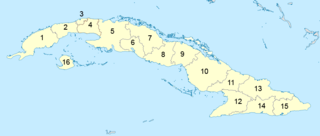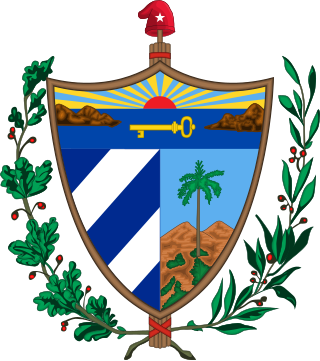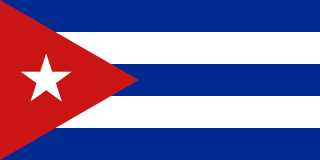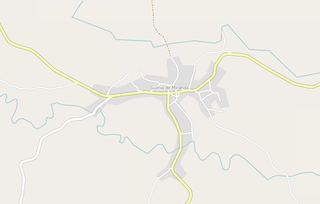
Administratively, Cuba is divided into 15 provinces and one special municipality. The current structure has been in place since August 2010, when the then-La Habana Province was divided into Artemisa Province and Mayabeque Province.

Villa Clara is one of the provinces of Cuba. It is located in the central region of the island bordering on the Atlantic Ocean to the north, Matanzas Province to the west, Sancti Spiritus Province to the east, and Cienfuegos Province to the South. Villa Clara shares with Cienfuegos and Sancti Spiritus on the south the Escambray Mountain Range. Its main cities are Santa Clara, Remedios, Sagua La Grande, Camajuani, Caibarién, Ranchuelo, Placetas, and Manicaragua.

Sancti Spíritus is one of the provinces of Cuba. Its capital is the identically named Sancti Spíritus. Another major city is Trinidad.

Trinidad is a town in the province of Sancti Spíritus, central Cuba. Together with the nearby Valle de los Ingenios, it has been a UNESCO World Heritage Site since 1988, because of its historical importance as a center of the sugar trade in the 18th and 19th centuries. Trinidad is one of the best-preserved cities in the Caribbean from the time when the sugar trade was the main industry in the region.

Bayamo is the capital city of the Granma Province of Cuba and one of the largest cities in the Oriente region.

Amelia Peláez del Casal was an important Cuban painter of the Avant-garde generation.

Las Tunas is a city and municipality in central-eastern Cuba. It is the capital of the Las Tunas Province and was named Victoria de Las Tunas from 1869 to 1976.
Pedro Reinaldo Álvarez Castelló was a Cuban artist who rose to prominence during Cuba's Special Period.

Remedios, also known as San Juan de los Remedios, is a city and municipality located 3 miles (4.8 km) from the northern coast of Cuba, in the center of the island. It is the oldest Spanish settlement in the former Las Villas province. It is now part of the province of Villa Clara.

The provinces of Cuba are divided into 168 municipalities. They were defined by Cuban Law Number 1304 of July 3, 1976 and reformed in 2010 with the abrogation of the municipality of Varadero and the creation of two new provinces: Artemisa and Mayabeque in place of former La Habana Province.
Julio Breff is a self-taught Cuban painter. He specializes in primitive paintings.
Manuel Castellanos López is a Cuban graphic artist.
Zaza Reservoir is the largest man-made reservoir in Cuba. It is located in the Sancti Spíritus Province in central Cuba, 10 kilometres (6.2 mi) south-east of the city of Sancti-Spíritus and 11 kilometres (6.8 mi) north-west of La Sierpe. It has a water mirror area of 113.5 km2 (43.8 sq mi). and an average volume of 750,000,000 m³.
Juan Andrés Rodríguez better known by his artistic name El Monje. He was a Cuban artist specializing in painting and drawing.

The following outline is provided as an overview of and topical guide to Cuba:

Guasimal is a Cuban village and consejo popular of the municipality of Sancti Spíritus, in Sancti Spíritus Province. In 2011 it had a population of about 5,000.

Santa Clara is the main railway station of the city of Santa Clara, seat of Villa Clara Province, Cuba. It is owned by the state company Ferrocarriles de Cuba (FFCC) and is located in front of Parque de los Mártires. It is one of the most important stations of Cuba and, along with Havana Central, Santiago and Camagüey, is a network's divisional headquarters.

Güinía de Miranda, sometimes shortened as Güinía, is a Cuban village and consejo popular of the municipality of Manicaragua, in Villa Clara Province. It has a population of circa 3,000 and the council's administrative territory covers an area of 114.2 km².





















